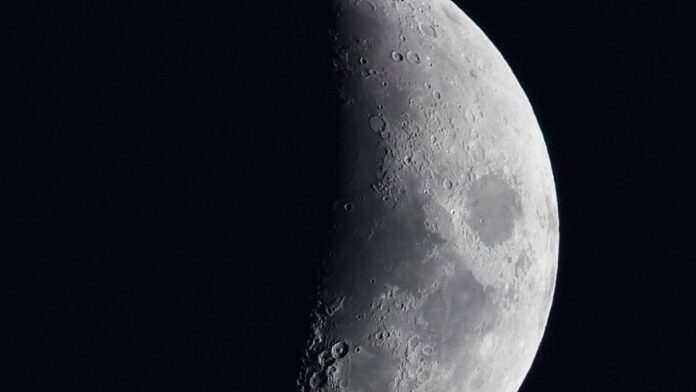The moon is strewn with minuscule beads of glass that have formed over billions of years as soil ejected during asteroid impacts cools and falls back to the lunar surface. An analysis of lunar samples delivered to Earth by China’s Chang’e-5 probe has now revealed that those beads contain a substantial amount of water.
The presence of water on the moon is no news. NASA’s lunar orbiters found evidence of the life-giving liquid inside the moon’s permanently shadowed polar craters already in the 1990s. In the 2000s, a reanalysis of samples from the manned Apollo missions of the late 1960s and 1970s detected hydrogen in the lunar soil. And the recently retired infrared telescope SOFIA confirmed in 2020 that water is present on the moon, even outside the dark craters. The origin and behavior of this lunar water is, however, still somewhat unclear.
However, the glass beads found in the 61.1 ounces (1,731 grams) of lunar regolith brought to our planet by Chang’e-5 in December 2020 might provide the missing piece in this puzzle.
Related: 1st map of moon water could help Artemis astronauts live at the lunar south pole
Billions of years ago, the moon was likely perfectly dry, scientists think. But eons of battering by the solar wind, the stream of charged particles constantly emanating from the sun, led to the formation of water in the moon’s surface layers. These reactions continue to take place even today as hydrogen atoms present in the solar wind bond with oxygen molecules in lunar regolith and form molecules of water. This is the input into the moon’s water cycle. Scientists know today that some of this water evaporates when the moon’s top layers get warmed up by sunshine. Then, during the lunar night, the surface gets rehydrated. The source of this rehydration, however, cannot be the solar wind as this process happens too quickly.
The new study suggests that the glass beads could serve as a hidden reservoir, from which water is readily released into the dried-out surface soil during the cool and dark lunar night.
The new study found much more water locked in these beads than previously thought. On top of that, the analysis suggested that a substantial quantity of the liquid accumulates inside those beads within a few years and can be released even more rapidly.
The researchers estimate that up to 600 trillion pounds (270 trillion kilograms) of water may be trapped in the top 40 feet (12 meters) of the lunar surface. The chemical composition of the water in the beads is consistent with the type produced from the interaction with solar wind, as it contains isotopes of hydrogen present in the sun.
“These findings indicate that the impact glasses on the surface of the moon and other airless bodies in the solar system are capable of storing solar wind-derived water and releasing it into space,” Hu Sen, a scientist at the Institute of Geology and Geophysics of the Chinese Academy of Sciences and co-author of the paper, said in a statement (opens in new tab).
The researchers think the glass beads may serve as a convenient resource for water extraction for future human crews but also for the manufacturing of rocket fuel on the surface of the moon for missions to more distant destinations.
The study (opens in new tab) was published in the journal Nature Geoscience on March 27.
Follow Tereza Pultarova on Twitter @TerezaPultarova. Follow us on Twitter @Spacedotcom and on Facebook.

